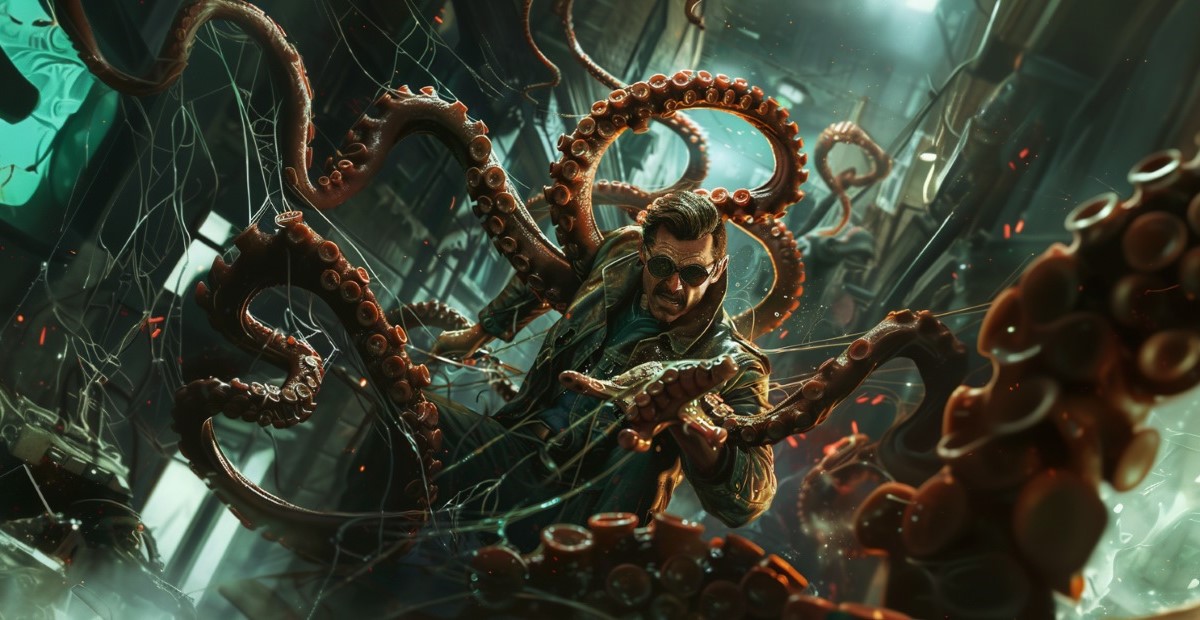When you think about “Spider-Man 2” (2004), a lot of things might come to mind: the nail-biting action, the heartwarming heroism, and, of course, the unforgettable villains. Chief among those is Doctor Octopus, or Doc Ock, as he’s affectionately known.
But did you ever stop to think about how closely Doc Ock mirrors the real animal he’s based on? Yeah, I’m talking about octopuses. Stick with me here, because this gets really interesting!
Contents
The Marvel of Mechanical Arms: More Than Just Special Effects
First off, Doc Ock’s infamous mechanical arms are pretty much characters in their own right.
It’s not just about the sheer, awe-inspiring spectacle of those metal limbs flailing around; it’s how they operate that’s truly fascinating.
They move with a mind of their own, which, as it turns out, is a brilliant nod to the biological wonders of a real-life octopus. And why do I say “a mind of their own”, let’s move on to discuss the octopus and you will know.
The Wonders of Octopus Intelligence: Nature’s Ingenious Design
Now, onto the star of our show: the octopus. Octopuses are nothing short of genius. I mean, these creatures are the Einsteins of the ocean.
But here’s the kicker: their intelligence operates on a whole different level compared to other animals. While we humans have a central nervous system controlled by one big boss brain, octopuses use a spread-out system.
Imagine having not one, but nine brains. Yes, nine!
Octopuses have a central brain and eight additional mini-brains, one for each arm, allowing them to perform feats of problem-solving and flexibility that let them move in ways that most other animals can’t match.
Each arm can act on its own, independent of the central brain, to explore, manipulate objects, or even escape predators. It’s like each arm has its own personality and set of skills. Pretty cool, huh?
When Science Meets Fiction: Otto’s Dream

Now, back to our friend Doc Ock. When Otto Octavius designed his mechanical arms, he was essentially aiming to replicate this incredible biological phenomenon.
The idea was that each arm would have its own autonomy, akin to the mini-brains of an octopus’s arms, enabling unparalleled multitasking and problem-solving abilities.
Doc Ock’s arms moving by themselves show just how much they’re like real octopus arms, mixing amazing natural abilities with technology.
You can especially see this when he turns bad and starts talking to the arms, showing how much they do their own thing.
However, trying to combine human intelligence with the unique talents of an octopus turned out to be more complicated than expected. This mix doesn’t quite work as he intended, leading to unexpected outcomes.
In the end, it’s a testament to the character’s depth and the thoughtfulness behind his creation. So, the next time you catch “Spider-Man 2,” give Doc Ock’s arms a closer look. They’re a cool, if slightly terrifying, tribute to one of the ocean’s most remarkable inhabitants.
